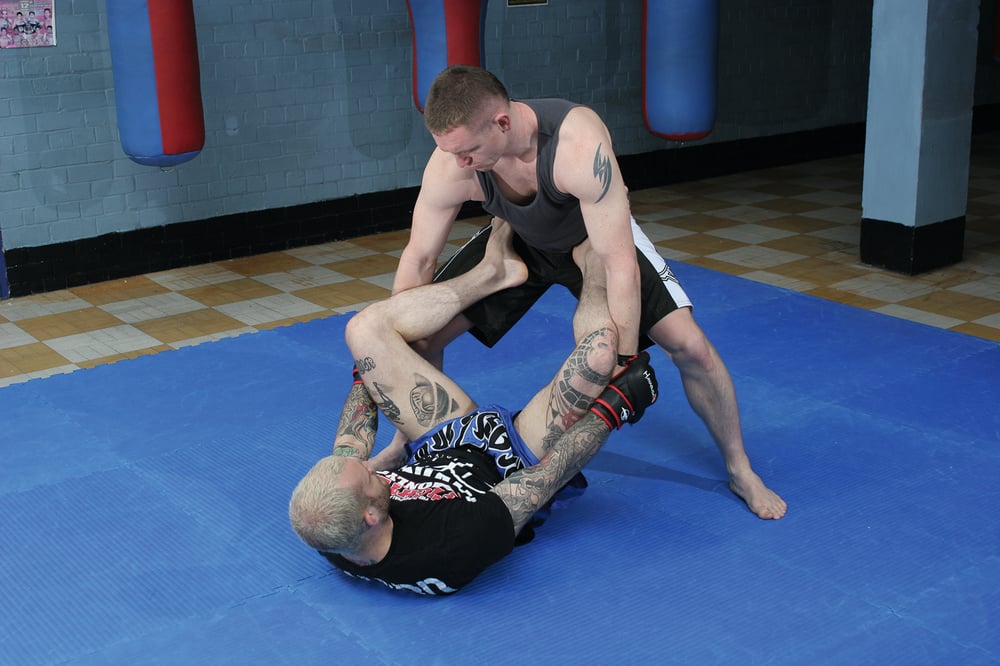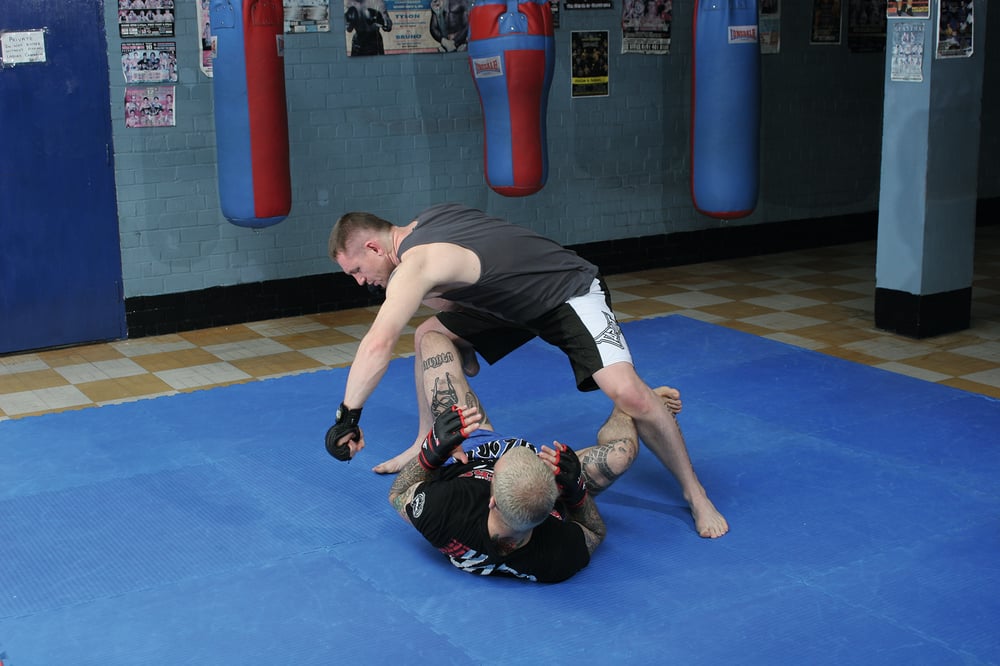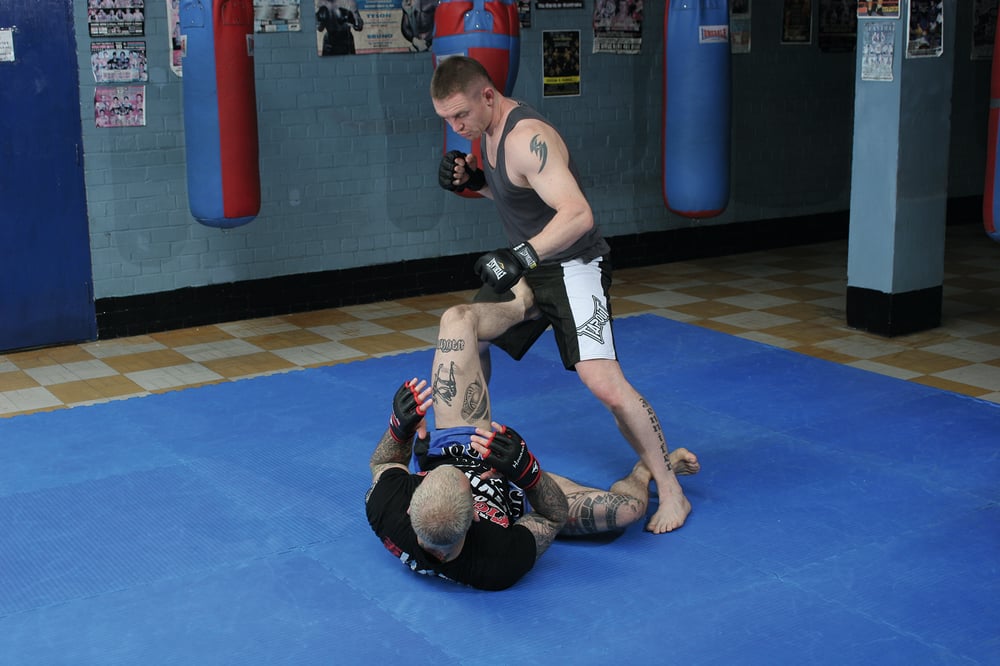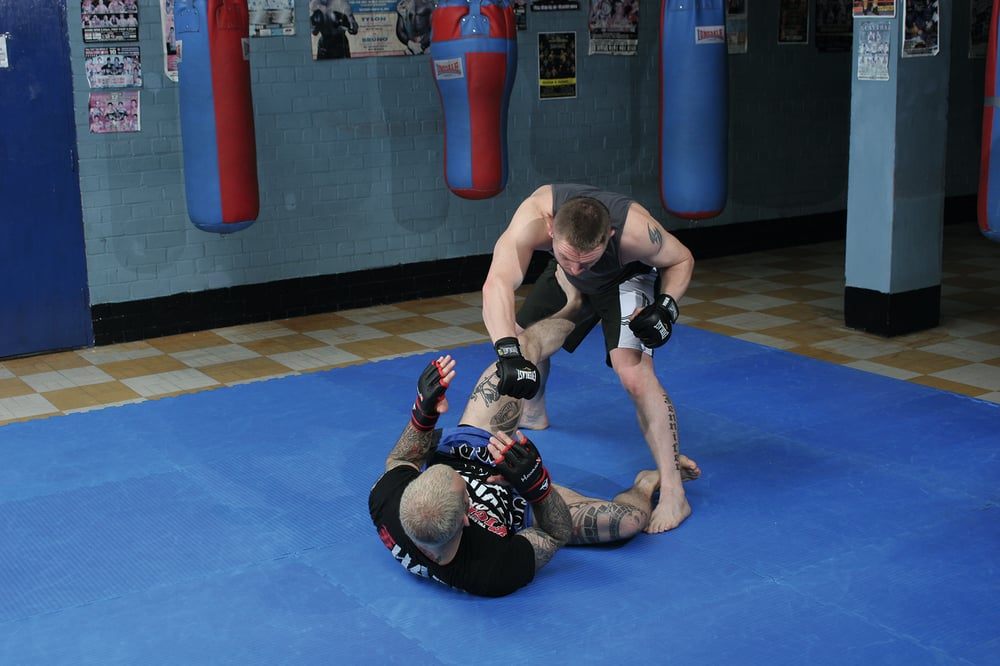
Issue 059
February 2010
In the second part to this series we look at some methods of defending yourself from (and controlling) a standing opponent. Many fighters will elect to stand when in an opponent’s guard so as to avoid the various submission attacks the man on the bottom can employ. This puts the man on the bottom in danger of taking heavy punches, as a standing opponent can generate more power than one on his knees. Good leg-dexterity and hip movement are essential to play a good open-guard game.
The guard against a standing opponent
1. Hooks on hips with wrist control
Your opponent may stand up, which will open new options for him to pass the guard and strike from the top. For the man on the bottom, there is the opportunity for up-kicks and sweeps.
Utilizing the push–pull principle is critical, as is keeping your opponent off balance. If he sets his base he will be able to punch accurately and with power, as well as resist your sweep.
It is important to note that you should not remain with the hooks in the same position for too long against a standing opponent. Transitioning with speed is the key to keeping your opponent unbalanced and protecting your head. Your hooks must stick to your opponent as you push and pull, or your opponent will take control of your legs.
2. Staggered open guard
Pete has both hooks on the hips, maintaining a bend at the knee. If he completely straightens both his legs he will make it far easier for Rob to pass. With both feet on the hips Pete can only push, and must use his wrist controls for the ‘pull’ motion. Maintaining wrist control in this position is very difficult and Pete will inevitably lose them at some point. Pete must use his legs to maintain the distance between his head and Rob’s hands.
Pete modifies his hooks to upset Rob’s base. He pulls behind Rob’s knee and pushes on the thigh. While Rob is reacting to the shifts in his base all his efforts are centered on maintaining his balance and not on striking.
3. Both hooks behind the knees
With both hooks behind the knees Rob cannot back away. If Pete wishes to go to the ankles he will free Rob’s arms, so Pete must have perfect timing or he will find himself exposed to Rob’s punches.
4. Slipping punches
1. When Rob throws the right, Pete pulls his left hook and pushes with the right, shifting his hips and moving his head out of the way.
2. When Rob throws the left Pete slips to the other side.
5. Hook on hip, hook behind ankle
1. Pete can drop one hook low to the ankle as Rob steps back, which opens Rob up for the sweep.
2. If Rob attempts to throw the right hand, Pete pulls on theankle and simultaneously kicks the hip away.
...
















